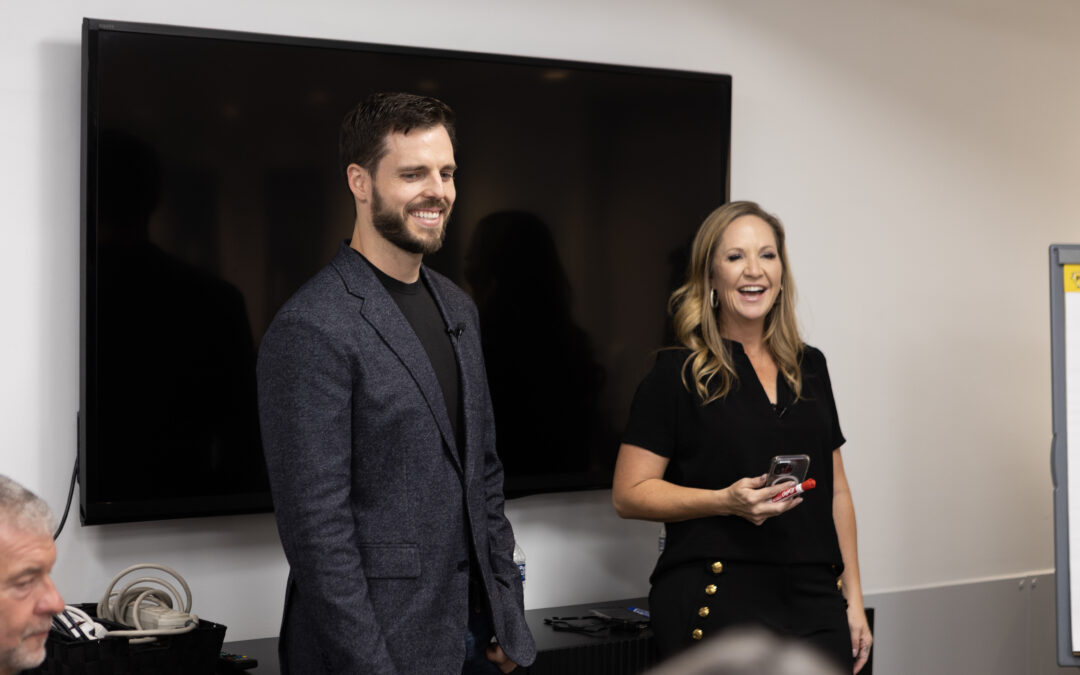Building a high performance team is essential in today’s competitive environment, but how do you turn individual talent into collective excellence? With a focus on aligning goals, refining leadership, and enhancing collaboration across entire teams, we’ll lay out ten transformative tactics that address these challenges head-on. From recruitment to retention and innovative collaboration, you’ll learn to construct and foster a team well-equipped for sustained success.
Key Takeaways
- A high-performance team requires a culture of excellence with shared values, clear expectations, growth mindset, and empowerment through trusting leadership and strategic recruitment.
- Effective communication, regular performance reviews, and recognizing achievements are vital for team cohesion and motivation, alongside fostering a supportive work environment with flexible policies and well-being initiatives.
- Investing in continuous improvement and professional development is key to maintaining competitiveness and innovation, thus ensuring team members are equipped to tackle current and future challenges effectively.
Cultivating a Culture of High Performance

A high-performance company culture doesn’t happen by accident; it’s carefully cultivated through shared values, a unified vision, and an environment that champions excellence. By establishing clear team expectations and fostering competitive behaviors, you set the stage for team members to engage with their work and align with the organization’s mission.
A flexible work culture and recognition-rich environment further enhance employee motivation, contributing to the overall high-performance ethos.
Establishing Team Values and Vision
Team values and vision are the compass that guides your team’s journey. They are not just words on a wall; they are the principles that every team member lives by. Aligning new hires with the organization’s culture, and ensuring their personal and emotional skills resonate with existing team members, creates a powerful synergy.
Effective communication of these company values inspires employees, making them feel part of a greater purpose and a valued contributor to the company’s success.
Promoting a Growth Mindset Among Team Members
A growth mindset is the fuel that powers the engine of a high-performance team. Investing in employee training and development is not just about enhancing skills; it’s about demonstrating a commitment to your team’s future. By promoting a culture of continuous learning and development, you equip your team to adapt to change, overcome challenges,and celebrate successes, all of which are hallmarks of a growth-oriented team.
Increase Employee Engagement
The environment in which your team operates can significantly impact their performance. Spaces that cater to various needs throughout the day, from focused work to collaboration, facilitate innovation and excellence.
A work environment that supports open communication and encourages collaboration not only helps to improve employee engagement but also leads to more innovative solutions, ultimately benefiting the customer, employee experience, and the company’s bottom line. By boosting employee engagement, companies can unlock the full potential of their workforce.
Empowering Leadership: The Key to Unlocking Potential

Empowered employees are the heart of a high-performance team, and it starts with empowering leadership. Visionary leaders who understand the power of emotional intelligence build trust, foster ownership, and nurture an environment where open communication is the norm. Such an atmosphere leads to higher job satisfaction, creativity, and improved team performance, laying the groundwork for a robust and engaged workforce.
Leading by Example
Leading by example is the cornerstone of empowering leadership. When leaders embody the core values and vision of the organization, they set a standard that resonates throughout the team. This influence is powerful; it inspires commitment, fosters a positive attitude, and shapes the team’s performance and engagement.
By demonstrating the behaviors and attitudes they expect from their team, leaders instill a culture of accountability and excellence.
Delegation and Trust-Building
Delegation is more than just assigning tasks; it’s an exercise in trust-building. Leaders who delegate effectively communicate clear expectations and provide the necessary support for team members to succeed. This approach not only encourages professional growth but also builds a foundation of trust and clarity that is essential for a high-performing team.
By entrusting employees with meaningful responsibilities, leaders foster a culture of empowerment and engage employees, resulting in engaged employees.
Coaching and Mentoring
The role of a leader extends beyond management to coaching and mentoring. This involves:
- Creating an environment of trust
- Encouraging team members to take ownership of their tasks and career progression
- Developing individual development plans
- Providing consistent feedback
- Guiding the team towards continuous improvement, innovation, and success.
This coaching mindset leads to greater employee engagement, support for growth, and a commitment to excellence.
Strategic Recruitment and Talent Management
Building a high-performance team begins with strategic recruitment and talent management. This involves a comprehensive approach that assesses candidates for both cultural fit and skill set, retains top performers through diverse strategies, and provides career development opportunities.
By aligning talent management with organizational goals, you create a team that is not only skilled but also deeply engaged and aligned with the company’s mission.
Hiring for Cultural Fit and Skill Set
Hiring the right people is critical to the success of your team. It’s about finding individuals who not only have the necessary skills but also share the company’s core values and culture. Techniques such as behavioral interview questions and personality assessments can reveal whether a candidate will thrive within your team’s dynamic.
Balancing the importance of skill set with cultural fit leads to optimized team performance and job satisfaction.
Retention Strategies for Top Performers
Retaining top talent is just as important as hiring the right people. Clear career development opportunities, recognition of efforts, and involvement in decision-making contribute to employee satisfaction and engagement, ultimately reducing employee turnover.
By employing a diverse strategy that includes work-life balance, mentorship programs, and comprehensive compensation packages, you not only retain your best performers but also foster a culture of excellence and loyalty.
Career Development Opportunities
Providing career development opportunities is essential for the growth of both your employees and your organization. By offering resources such as career centers, varied career paths, and cross-training opportunities, you empower all your employees and team members to enhance their skills, excel in their roles, and prepare for future advancement. This investment in their professional growth leads to higher retention, motivation, and performance levels.
Fostering Effective Communication

Effective communication is the glue that holds a high-performance team together. By building open channels, encouraging feedback and dialogue, and leveraging technology for collaboration, you create a foundation for success.
Clear and consistent communication ensures that everyone is on the same page, fostering a culture of continuous improvement and meaningful engagement.
Building Open Communication Channels
Open communication channels are essential for preventing misunderstandings and fostering effective collaboration. Establishing a communication-rich culture within a team prevents issues and enhances integrity.
Regular engagement surveys are an effective way to measure employee engagement, promoting a culture where communication is valued, and everyone is encouraged to share their thoughts and ideas openly and honestly. By tracking and improving employee engagement through these surveys, organizations can ensure they are fostering a positive work environment.
Encouraging Feedback and Dialogue
Feedback and dialogue are crucial components of effective communication. Adopting a bottom-up approach and transparent performance reviews creates an environment where team members feel safe to share employee feedback and engage in meaningful dialogue.
This culture of continuous improvement fosters a sense of inclusion and unity towards the team’s goals, enhancing performance.
Leveraging Technology for Collaboration
In today’s digital age, leveraging technology for collaboration is a game-changer. Digital tools like instant messaging, video conferencing, and collaborative project management platforms enhance real-time communication and collaboration. These technologies provide measurable data and insights into team performance, driving productivity and fostering a culture of open communication.
Measuring Team Performance and Progress
Measuring team performance and progress is not just about tracking results; it’s about setting the right KPIs, conducting regular performance reviews, and celebrating successes. By doing so, you create a culture of accountability, motivation, and recognition that drives continuous improvement and aligns team efforts with business goals.
Setting Key Performance Indicators (KPIs)
Key Performance Indicators (KPIs) are invaluable for tracking and measuring progress towards specific company goals. They serve as benchmarks that guide strategic decision-making and performance assessment. By setting SMART KPIs, teams have clear targets to aim for, ensuring every member understands their role in achieving business success.
Regular Performance Reviews
Regular performance reviews are vital for personal and team development. They provide opportunities for feedback and recognition, help identify areas for improvement, and align individual contributions with organizational objectives.
By conducting performance reviews based on KPIs, you recognize high performers and facilitate targeted improvements that elevate the team’s overall performance.
Celebrating Milestones and Successes
Celebrating milestones and successes is about more than just acknowledging achievements; it’s about reinforcing the value of each team member’s contributions and fostering a culture of appreciation and camaraderie. By recognizing individual and team successes, leaders can encourage employees to enhance:
- Morale
- Motivation
- Engagement
- Productivity
Enhancing Team Dynamics and Synergy

A team that works well together achieves more than just the sum of its parts. By engaging in team-building activities, implementing conflict resolution strategies, and fostering diversity and inclusion, you enhance team dynamics and create a synergistic environment that propels the team towards greater achievements.
Team Building Activities
Team-building activities are a powerful tool for enhancing team dynamics. They build trust, encourage collaboration, and help team members understand each other better. Whether it’s through community engagement, creative tasks, or simply creating opportunities for casual interaction, such activities strengthen the bonds within the team and contribute to a cohesive and high-performing unit.
Conflict Resolution Strategies
Conflict is inevitable in any team, but the way it’s handled can make all the difference. Transparent conflict resolution policies can provide employees with a clear framework for addressing disputes, ensuring fairness, and fostering a culture of respect and cooperation. By resolving conflicts constructively, you maintain team harmony and keep the focus on achieving common goals.
Diversity and Inclusion Initiatives
Diversity and inclusion are more than just buzzwords; they are essential components of a strong team dynamic. Empowering leaders who value emotional intelligence create an inclusive work environment that welcomes diverse perspectives.
This enriches the team’s problem-solving abilities and fosters a culture of respect and meaningful engagement.
Encouraging Employee Engagement
Employee autonomy is a key driver of engagement and innovation. When team members are trusted to make decisions, have flexibility in their work arrangements, and are empowered to self-organize, they take greater ownership of their work. This leads to a more motivated, productive, and cohesive team that thrives on being entrusted with responsibility.
Trusting Engaged Employees to Make Decisions
Trusting employees to make decisions is about giving them the autonomy to act in ways that align with the company’s goals. When leaders set clear expectations and empower team members, they foster a sense of trust and accountability. This not only enhances engagement but also encourages a proactive approach to problem-solving and innovation.
Providing Flexibility in Work Arrangements
Offering flexibility in work arrangements is a testament to a company’s understanding of the modern employee’s needs. Flexible work arrangements and schedules allow team members to manage their work tasks alongside personal responsibilities, reducing stress and burnout.
This level of autonomy can lead to a significant boost in productivity, job satisfaction, and customer loyalty, creating a work environment that supports both the professional and personal facets of an employee’s life.
Empowering Teams to Self-Organize
Self-organization is a hallmark of agile and dynamic teams. By fostering an environment of trust and collaboration, leaders enable team members to make autonomous decisions that benefit the team and align with organizational goals.
When team members understand their roles and are equipped to collaborate effectively, they can innovate and adapt to challenges, leading to a more resilient and high-performing team.
How Companies Can Improve Employee Engagement
Boosting employee engagement is crucial for companies aiming to reduce employee turnover and foster a thriving work culture. Engaged employees are not only more productive but also more loyal to their organization. One effective way to enhance employee engagement is by actively soliciting and acting upon employee feedback. This not only empowers employees to voice their concerns and suggestions but also demonstrates that their opinions are valued. Additionally, regularly measuring employee engagement through surveys or other methods provides valuable insights into the overall satisfaction and sentiment within the workforce. Investing in onboarding programs for new employees is another strategy that can positively impact engagement levels from the outset, ensuring that new hires feel welcomed and equipped to contribute meaningfully to the organization. By prioritizing employee engagement initiatives, companies can create a more positive and fulfilling work environment for their employees, ultimately leading to greater organizational success.
Implementing Continuous Improvement Practices
Continuous improvement is not a one-time initiative but a perpetual cycle that keeps teams competitive and innovative. By embracing lean and agile methodologies, regularly evaluating processes, and encouraging creativity, teams can stay ahead of the curve.
This constant pursuit of excellence ensures that a team not only maintains its high-performance standards but also continues to evolve and improve over time.
Lean and Agile Methodologies
Lean and agile methodologies are about streamlining processes and adapting swiftly to change. These approaches emphasize the importance of:
- Customer value
- Iterative development
- Responding to feedback
- Pivoting when necessary
This enables teams to be more efficient and effective in their work.
By fostering a culture that values efficiency and adaptability, teams can deliver better results faster, which is essential in today’s fast-paced business environment.
Regular Process Evaluations
Regular evaluations are crucial for identifying inefficiencies and implementing improvements. By continually assessing team workflows and making necessary adjustments, teams can enhance their performance and prevent stagnation.
Utilizing HR software can further streamline processes and support employee development, leading to even more engaged employees and team.
Encouraging Creativity and Innovation
Fostering a culture of creativity and innovation is essential for teams to stay relevant and competitive. Encouraging team members to share ideas, experiment, and learn from failures creates an environment where innovation can thrive while encourage creativity.
By setting aside time for creative projects and encouraging diverse thinking, leaders can inspire their teams to develop unique solutions that drive the organization forward.
Investing in Training and Professional Development
Investing in training and professional development is a clear signal to employees that their growth is valued. Structured training programs and professional development opportunities not only increase employee engagement but also enhance productivity and the ability to innovate. By committing to the professional growth of your team, you build a workforce that is equipped to tackle current and future challenges.
Tailored Training Programs
Tailored training programs address the specific needs and roles of team members, ensuring that they are equipped to excel in their current positions while preparing for future challenges. By focusing on immediate job requirements and long-term career growth opportunities, these programs help employees stay engaged and motivated to contribute their best to the team.
Mentorship and Peer Learning Opportunities
Mentorship and peer learning are powerful tools for building a knowledgeable and cohesive team. These opportunities facilitate not only the transfer of knowledge but also the strengthening of interpersonal relationships within the team.
By sharing experiences and expertise, team members can learn from each other, accelerate their development, and enhance the overall performance of the team.
Support for Acquiring New Skills
Supporting team members in acquiring new skills is crucial for fostering a culture of continuous learning and adaptability. Offering resources such as tuition reimbursement and access to professional certifications demonstrates the organization’s investment in employee growth.
When employees can feel valued and supported in their learning endeavors, they are more engaged, loyal, and prepared to meet the evolving needs of the business. This is why it’s crucial to support employee engagement through continuous learning opportunities.
Nurturing Work-Life Balance
Nurturing work-life balance is essential for maintaining a healthy and high-performing team. When employees are well-rested and have time for personal pursuits, they bring more energy and creativity to their work.
By implementing policies that support work-life balance, organizations can ensure that their employees remain productive, motivated, and less likely to experience burnout.
Flexible Work Policies
Flexible work policies are a key component of nurturing work-life balance. They allow employees to:
- Tailor their work schedules to fit their personal lives better
- Lead to increased job satisfaction and productivity
- Manage their work and personal responsibilities effectively
- Stay with the organization and contribute positively to its success
Mental Health and Well-being Initiatives
Mental health and well-being initiatives play a crucial role in supporting work-life balance and overall employee engagement. By providing resources and support for mental health, companies can:
- Help employees manage stress
- Maintain a positive work environment
- Improve productivity and job satisfaction
- Reduce absenteeism and turnover rates
These initiatives are essential for creating a healthy and supportive workplace.
This focus on well-being not only improves productivity but also contributes to a culture of care and empathy within the organization.
Encouraging Time Off and Rest
Encouraging employees to take time off and rest is vital for their well-being and the team’s performance. Time away from work allows employees to recharge and return with fresh perspectives and renewed energy.
By promoting the benefits of vacations and staycations, and by offering diverse projects to prevent monotony, organizations can ensure their teams stay inspired and engaged.
Employee Feedback and Engagement Strategies
Employees crave feedback as it provides them with valuable insights into their performance, helping them grow both personally and professionally. Recognizing the importance of employee engagement, organizations must prioritize initiatives that encourage and inspire employees to actively participate in the workplace. By implementing effective feedback mechanisms, such as regular one-on-one meetings or anonymous surveys, employers can create an environment where all employees feel empowered to voice their thoughts and concerns. This not only demonstrates that their opinions are valued but also promotes workplace engagement and boosts employee morale. Furthermore, investing in employee retention strategies, such as professional development opportunities and recognition programs, reinforces a company’s commitment to its entire workforce, ultimately contributing to a more cohesive and motivated team.
Build a High Performance Team with Team Engage

Team Engage encapsulates the essence of all the strategies discussed, providing a cohesive employee engagement strategy framework for building high-performance teams. It emphasizes the importance of:
- Diversity
- A clear vision
- Psychological safety
- Specific goals
- Professional development
- Effective communication
- Recognition
- Role-model leadership
- Work-life balance
- Continuous feedback
By applying the principles of Team Engage, you can boost employee engagement and create a team that not only meets but exceeds expectations. Contact us, today!
Summary
In conclusion, building a high-performance team is a multifaceted endeavor that requires a deliberate and strategic approach. From fostering a culture of performance and empowering leadership to nurturing work-life balance and investing in continuous improvement, each tactic contributes to the creation of a team that is engaged, productive, and innovative. Remember, the journey to excellence is ongoing, and with these tactics, you are well-equipped to lead your team to new heights of success.
Frequently Asked Questions
How do you develop a high-performing team?
To develop a high-performing team, it’s essential to prioritize communication, set clear goals, tackle conflict, understand team dynamics, master emotional intelligence, establish trust, and see feedback as a gift. These key areas will help create and maintain a successful team.
What are the 7 C’s of effective team building?
The 7 C’s of effective team building are Capability, Cooperation, Coordination, Communication, Cognition, Coaching, and Conditions. These elements are essential for a team to thrive and excel.
What are the 4 characteristics of a high performance team?
High-performance teams exhibit defined roles and responsibilities, a strong sense of trust and respect, a clear understanding of their mission, and diverse members with a team mentality. These characteristics help them pursue excellence through shared goals and open communication, leading to accountability and success without the need for governance.
What are the 5 C’s of team building?
The 5 C’s of team building are communication, camaraderie, commitment, confidence, and coachability. Focusing on these areas can significantly improve team dynamics and individual performance.
How do I ensure my team’s goals align with the company’s vision?
To ensure your team’s goals align with the great company culture’s vision, establish clear team values and vision that resonate with the company’s culture, and communicate these effectively

